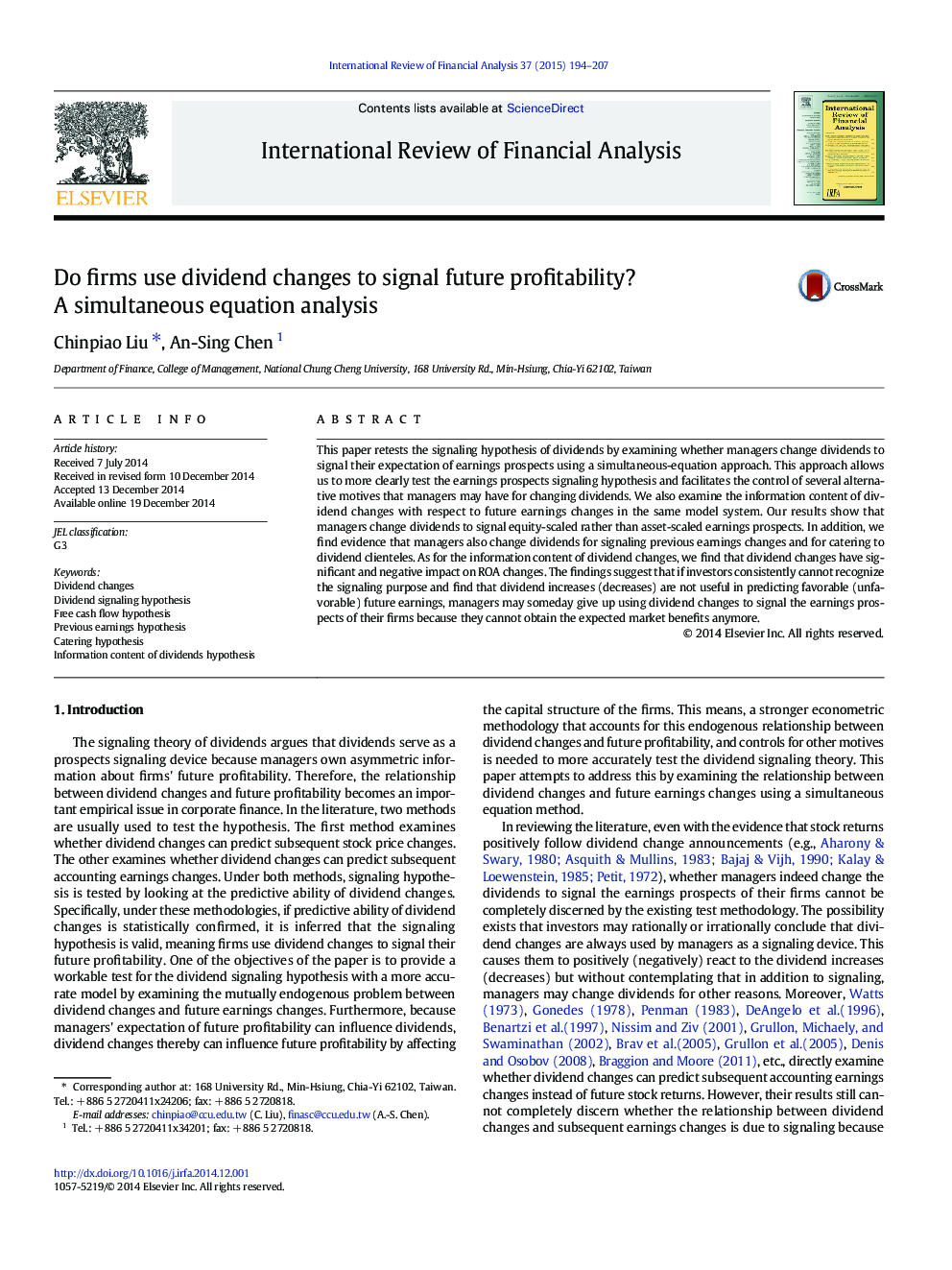| Article ID | Journal | Published Year | Pages | File Type |
|---|---|---|---|---|
| 5084750 | International Review of Financial Analysis | 2015 | 14 Pages |
â¢We retest the signaling hypothesis of dividends with a simultaneous-equation model.â¢We control for several alternative motives that managers may have for changing dividends.â¢Managers change dividends to signal equity-scaled rather than asset-scaled earnings prospects.â¢Managers also change dividends for signaling previous earnings changes and for catering to dividend clienteles.â¢Dividend changes have negative impact on ROA changes.
This paper retests the signaling hypothesis of dividends by examining whether managers change dividends to signal their expectation of earnings prospects using a simultaneous-equation approach. This approach allows us to more clearly test the earnings prospects signaling hypothesis and facilitates the control of several alternative motives that managers may have for changing dividends. We also examine the information content of dividend changes with respect to future earnings changes in the same model system. Our results show that managers change dividends to signal equity-scaled rather than asset-scaled earnings prospects. In addition, we find evidence that managers also change dividends for signaling previous earnings changes and for catering to dividend clienteles. As for the information content of dividend changes, we find that dividend changes have significant and negative impact on ROA changes. The findings suggest that if investors consistently cannot recognize the signaling purpose and find that dividend increases (decreases) are not useful in predicting favorable (unfavorable) future earnings, managers may someday give up using dividend changes to signal the earnings prospects of their firms because they cannot obtain the expected market benefits anymore.
